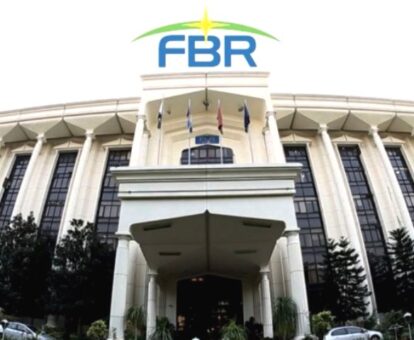Section 69 of Income Tax Ordinance, 2001 provides treatment of time for receiving amount under tax law.
In a move aimed at enhancing clarity and precision in the treatment of income receipts, the Federal Board of Revenue (FBR) has emphasized the provisions outlined in Section 69 of the Income Tax Ordinance, 2001. The updated ordinance, inclusive of amendments introduced through the Finance Act, 2021, provides a comprehensive framework for understanding the time of receiving amounts, benefits, or perquisites for taxation purposes.
Section 69 of the Income Tax Ordinance, 2001, outlines the criteria that define the moment when an individual or entity is considered to have received an amount, benefit, or perquisite. The text of the section, as updated up to June 30, 2021, is as follows:
“69. Receipt of income. — For the purposes of this Ordinance, a person shall be treated as having received an amount, benefit, or perquisite if it is —
(a) actually received by the person;
(b) applied on behalf of the person, at the instruction of the person or under any law; or
(c) made available to the person.”
Key Components of Section 69:
1. Actual Receipt by the Person (Clause a):
• The first criterion outlined in Section 69 emphasizes the actual receipt of an amount, benefit, or perquisite by the person. This criterion recognizes the tangible and physical acquisition of income, ensuring that it is not merely a theoretical or potential receipt.
2. Application on Behalf of the Person (Clause b):
• The second condition under Clause b broadens the scope of income receipt by including instances where the amount or benefit is applied on behalf of the person. This could occur either at the explicit instruction of the person or as mandated by any applicable law. This provision acknowledges the diverse ways in which income may be received or utilized.
3. Availability to the Person (Clause c):
• The third condition, as per Clause c, deems a person to have received income if it is made available to them. This clause recognizes that the mere accessibility or availability of income, even if not directly received or utilized, falls within the purview of taxation.
The incorporation of these three criteria in Section 69 serves to create a robust framework for determining the time of income receipt, thus facilitating a more comprehensive and accurate assessment for taxation purposes.
The FBR’s emphasis on these provisions underscores its commitment to providing clear guidelines for taxpayers and tax professionals. Understanding the nuances of when income is deemed to be received ensures fair and consistent application of tax regulations, fostering a transparent and accountable taxation system.
Taxpayers and entities operating within the ambit of the Income Tax Ordinance, 2001, are encouraged to familiarize themselves with the provisions of Section 69. This understanding is essential for accurate financial planning, compliance with tax obligations, and contributing to the overall economic stability of the country.
The clarification provided by Section 69 of the Income Tax Ordinance, 2001, as updated through the Finance Act, 2021, establishes a comprehensive framework for determining the time of receiving amounts, benefits, or perquisites for taxation purposes. This proactive step by the FBR aligns with broader efforts to enhance transparency and understanding within the taxation system, benefiting both taxpayers and the regulatory authority.
